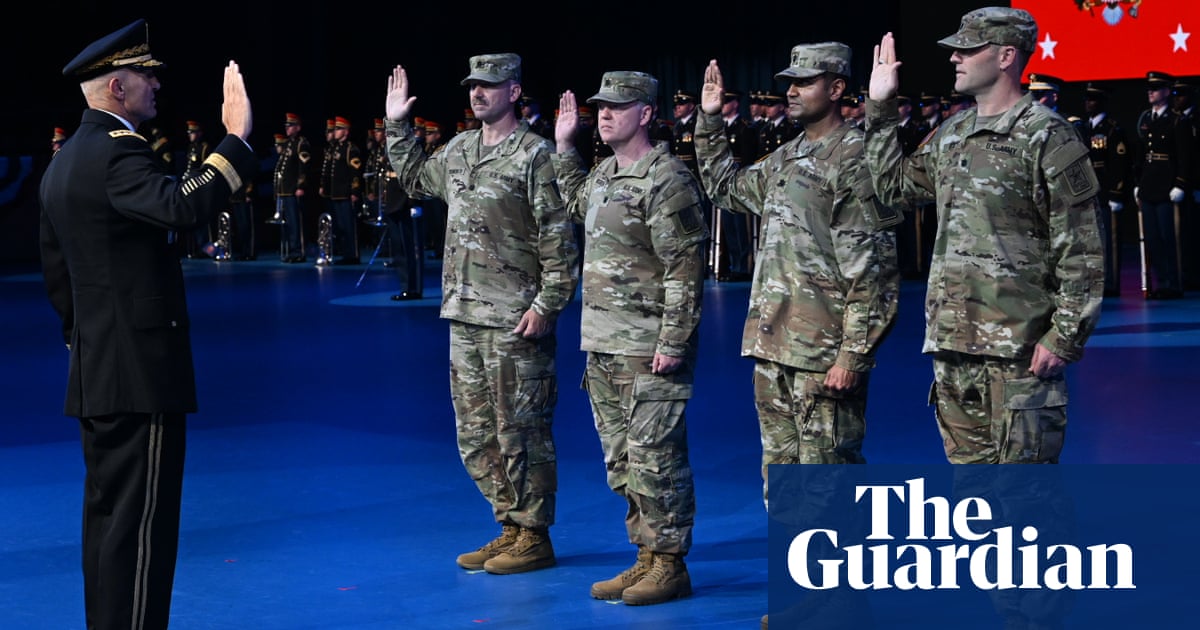Meta’s chief technology officer has called it “the great honor of my life” to be enlisted in a new US army corps that defence chiefs set up to better integrate military and tech industry expertise, including senior figures from top tech firms that also includePalantirandOpenAI.
Andrew Bosworth, a long-term lieutenant to Mark Zuckerberg known widely as “Boz”, is one of several senior Silicon Valley executives commissioned to the rank of lieutenant colonel in the corps, called Detachment 201, which the US armysayswill “fuse cutting-edge tech expertise with military innovation”.
Bosworth, who joined Facebook in 2006, was sworn into the army reserves earlier this month alongside Shyam Sankar, the chief technology officer ofPalantir, a technology firm with extensive defence contracts, Kevin Weil, chief product officer of OpenAI, and Bob McGrew, an adviser at Thinking Machines Lab, a $10bn AI company. They wore military fatigues at the swearing-in ceremony but will not be full-time soldiers.
The recruitment is a sign of the increasing importance of technology in modern warfare and growing commercial and research links between some of the largest tech firms and the military. The US army said it was “just the start of a bigger mission to inspire more tech pros to serve without leaving their careers”.
In an interview withPirate Wires, Bosworth said he was joining in a personal capacity, but that some people at Meta had “reservations” about the move. He said he was approached to join by Sankar.
“I don’t think I waited 10 minutes,” Bosworth said. “I was like, ‘Yes, I would love to, it’d be the great honor of my life to do this.’”
Meta recently began apartnershipwith the defence technology company Anduril to develop augmented reality devices, such as headsets, for battlefield use, but Bosworth said his recruitment was separate from that project.
Even before he was sworn in, Bosworth said he and the three other tech executives had visited Fort Irwin in California to observe what theUS militarycalls “next generation command and control”.
“We reviewed a large number of new technology initiatives they’re developing, which I can’t talk more about,” he said. “Then we got in a helicopter and flew into what they call ‘the box’, which is where army battalions do training exercises. And they had a training exercise going where these battalions were using some of the next gen technology they’d been developing at the Army Futures Command … There’s tanks driving by, going through a field that has anti-tank impediments set up, and they figure out: how can they use new tools to overcome those? And like, instead of firing missiles or rockets, what if these things fire drones?”
He said that on the drive back from the “box” the army chief of staff’s chief technology officer, Dr Alex Miller, gave them “a lot of intelligence on what the army’s trying to do, what has and hasn’t been effective, and how he sees things going forward. At that point, even though none of us had been commissioned yet – we were still just private citizens who had been invited to observe the exercises.”
Asked about the types of projects they might work on, Bosworth said: “Some of those problems, the ones journalists like to write about, are around lethality and survival, but some of them are just logistical problems.”
Sankar, meanwhile, said technologists were “rediscovering Silicon Valley’s roots in national defense during the second world war and cold war”.
“Wars in Europe and the Middle East and, above all, the threat of a war in the Pacific have focused the national mind and initiated a scramble for mobilization,” hesaidearlier this month. “Exploding pagers and long-distance drone strikes from shipping containers prove that technology has once again changed the battlefield. Our military has to change with it.”
Meta was approached for comment.
